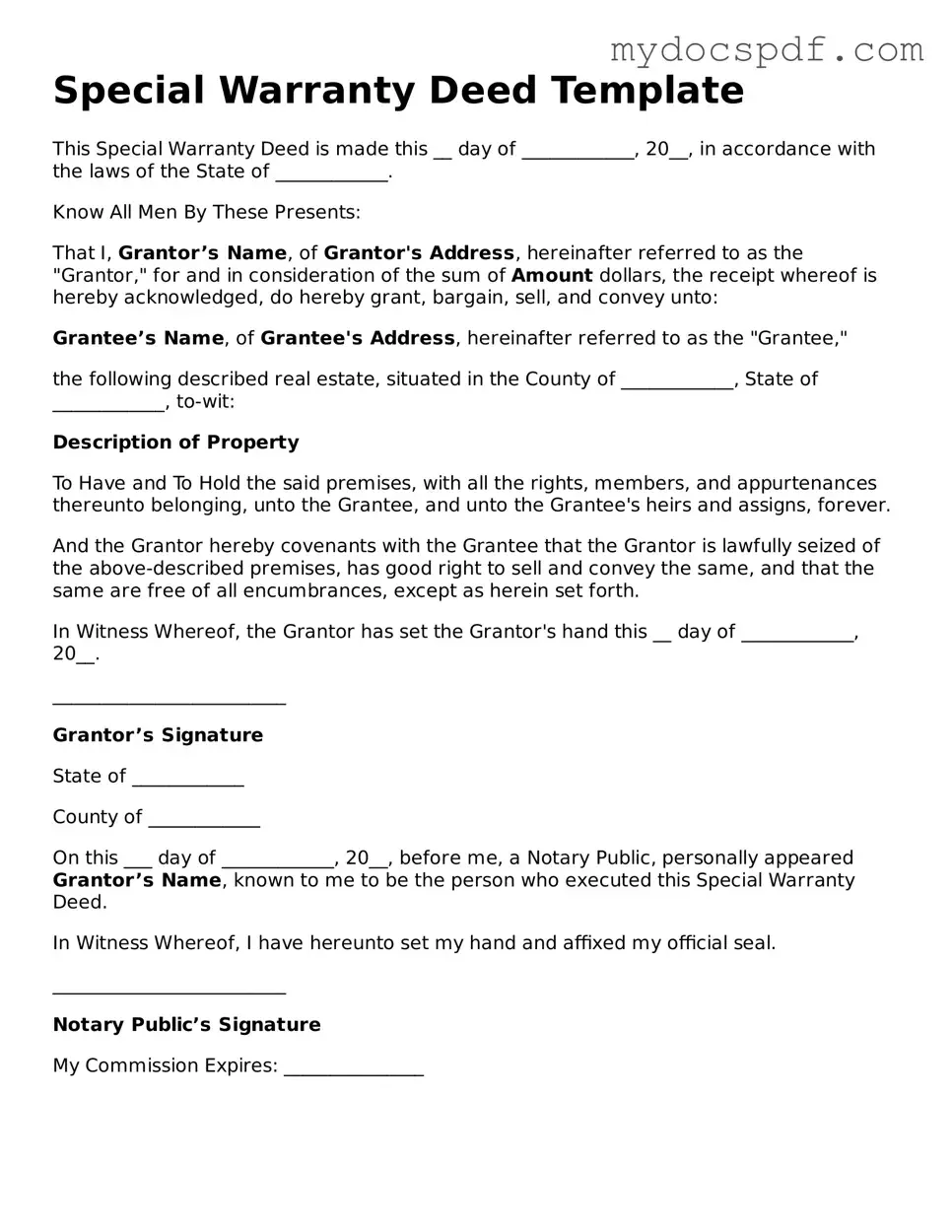Special Warranty Deed Template
This Special Warranty Deed is made this __ day of ____________, 20__, in accordance with the laws of the State of ____________.
Know All Men By These Presents:
That I, Grantor’s Name, of Grantor's Address, hereinafter referred to as the "Grantor," for and in consideration of the sum of Amount dollars, the receipt whereof is hereby acknowledged, do hereby grant, bargain, sell, and convey unto:
Grantee’s Name, of Grantee's Address, hereinafter referred to as the "Grantee,"
the following described real estate, situated in the County of ____________, State of ____________, to-wit:
Description of Property
To Have and To Hold the said premises, with all the rights, members, and appurtenances thereunto belonging, unto the Grantee, and unto the Grantee's heirs and assigns, forever.
And the Grantor hereby covenants with the Grantee that the Grantor is lawfully seized of the above-described premises, has good right to sell and convey the same, and that the same are free of all encumbrances, except as herein set forth.
In Witness Whereof, the Grantor has set the Grantor's hand this __ day of ____________, 20__.
_________________________
Grantor’s Signature
State of ____________
County of ____________
On this ___ day of ____________, 20__, before me, a Notary Public, personally appeared Grantor’s Name, known to me to be the person who executed this Special Warranty Deed.
In Witness Whereof, I have hereunto set my hand and affixed my official seal.
_________________________
Notary Public’s Signature
My Commission Expires: _______________
